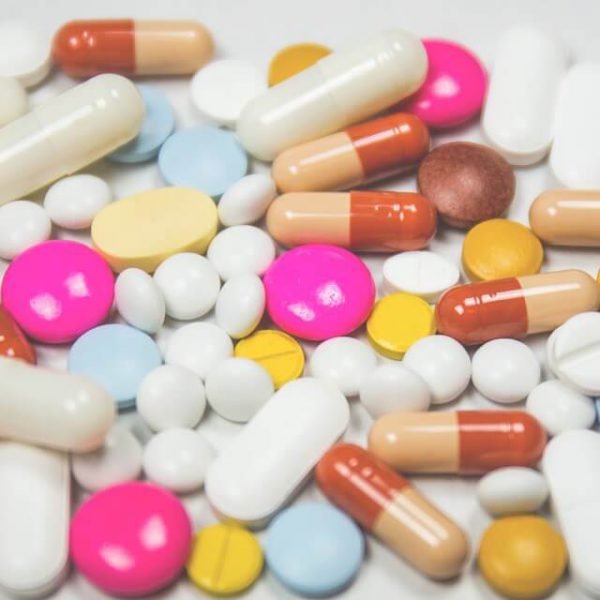Nurses and the Opioid Prescription Drug Epidemic
The news media is full of articles about what the government has termed “the opioid epidemic” and prescription drug abuse that is sweeping across the United States and the world. The “2016 National Study on Drug Use and Health” reported these troubling statistics—
“An estimated 28.6 million Americans age 12 and over used illicit drugs
during the month prior to the study.”
What the report concluded was that about 1 out of every 10 people are struggling with substance abuse that includes “addiction to prescription drugs.” It was noted that addiction can occur very quickly when prescription drugs are taken for non medical reasons. In fact, “more people report using controlled prescription drugs than cocaine, heroin and methamphetamine combined.” There are four types of abused prescription drugs:painkillers, tranquilizers, stimulants and sedatives.

While the population of United States comprises about 5 percent of the world’s population, the U.S. consumes about 80 percent of the “world’s prescription opioid drugs.”
In 2017, The American Nurses Association (ANA) reported that “about 1 in 10 or 10-15% of nurses may be impaired due to the abuse of drugs or alcohol.”
Serious physical, emotional, economic and legal consequences accompany addiction whether it involves alcohol, legal or illegal drugs and these consequences know no boundaries regarding age, gender, occupation, socio-economic status or ethnicity. In the population as a whole, alcohol still tends to be the drug of choice; however, because nurses have greater accessibility to controlled substances, that accessibility contributes to an increased number of incidents and growing dependence on them.
Unique Workplace Factors That May Increase a Nurses’Opportunity and Risk for Addiction
Statistically, healthcare professionals experience the same 1 in 10 odds associated with substance abuse and addiction in the general population. However, there are several unique elements encountered by nurses that may contribute to the 1 in 10 nurse addiction statistic reported by the ANA. Here are some of those factors provided by the National Council of State Boards of Nursing (NCSBN):
- Staffing shortages
- Increased patient awareness and assignment ratios
- Demands from administrators and physicians
- Shift rotations and long working hours
It is easy to see that these issues tend to make nursing a very stressful profession. Other things nurses may experience that can further add to a nurse’s stress are work-related bullying and verbal abuse,personal problems and maybe a lack of effective coping skills. On top of these stress factors is the relatively easy access that nurses have to the addictive,controlled medications prescribed for patient use. If the facility where a nurse works is lacking in its controls regarding receiving, storing,distributing and removal of drugs, this may provide an opportunity for a nurse to access them for personal use which is called diversion.
It is not difficult to envision how a nurse could be caught in the trap of drug abuse. Like others, nurses get injured and have surgery where painkilling drugs are prescribed. Nurses may also tend to self-medicate when they have a headache, suffer from insomnia or struggle to cope with work or personal stress.
Most of the time, it is a co-worker or a manager who confronts and reports a nurse about possible drug addiction. Nursing staff should receive training in identifying an impaired coworker and their responsibility to report any concerning observations. Below are common signs and symptoms of drug abuse in nurses to be aware of:
- Preference for working alone – while not a constant indication, working alone provides safety from getting caught while taking drugs or alcohol.
- Frequent use of medicinal mouthwash, the smell of mouthwash, alcohol, or other masking substances such as perfumes.
- Arriving early or agreeing to work after a scheduled shift – this behavior is sometimes used to obtain drugs.
- Picking up extra shifts or volunteering for isolated shifts and overtime to increase access to drugs.
- Frequent trips to the bathroom or other isolated areas.
- Evidence such as syringes, needles, or bloody tissues in lab coats, lockers, bathrooms, changing rooms, or call rooms.
- Unexplained small cuts or bruising on hands, feet, and arms usually with elaborate explanations.
- Unusual memory lapses in conversations or shift change report.
- Lapses in charting, record keeping, orders, and timekeeping activities.
- Changes in handwriting to sloppy or illegible as the shift progresses.
- Mood swings with patients, irritable and complaining about a patient one minute and happy the next or drastic changes in mood after a break or period of isolation.
- Preferring long sleeves or long lab coats, not removing coats or rolling up sleeves in warm conditions.
- Choosing to work with little or no supervision and becoming angry or upset when help or supervision is present.
- Volunteering to lock, unlock, or take charge of the med closet or storage area.
- Frequent mistakes in reporting, administering, or requesting medications.
- Patients who have pain medication administered may complain of excessive pain or narcotics not working after receiving them.
Although many of these are not specific to just medical professionals, these signs occur more frequently in a health care setting
https://www.narcotics.com/abuse/signs-and-symptoms-of-drug-abuse-among-nurses/.
Because of the potentially far-reaching and negative effects that accompany a nurse’s addiction in terms of themselves and the patients/residents who are relying on them for their care, the earlier a substance abuse problem in a nurse is recognized and treatment begins, the better. Patients are safe-guarded and the chances of the nurse being able to be restored and return to work is increased.
Most state boards recognize that treatment for substance abuse does work and nurses can recover and be returned safely back to work, and many offer non-disciplinary programs for those struggling with addiction. For recovery to succeed, it requires nurses in recovery to participate in a relapse prevention program and continuing care activities involving professional support. Often these activities will include random drug testing, documented attendance in 12-step programs, professional support groups and sometimes individual counseling. A nurse returning to work should have structured and specific guidelines that include a “return to work contract” that identifies “a workplace monitor, standards for work performance and conditions of employment and required drug screening.” This contract may also include some restrictions like “no access to controlled substances or not working the night shift.”
The National Council of State Boards of Nursing has published a brochure that administrators, managers and nurses might find helpful. It is titled, “What You Need to Know About Substance Abuse Disorder in Nursing” https://www.ncsbn.org/SUD_Brochure_2014.pdf
























